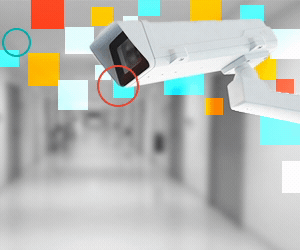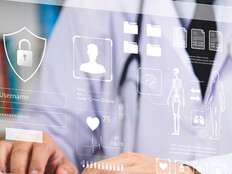Physical security technology includes surveillance cameras, motion sensors, access controls and role-based permissions. These technologies can protect health systems from both internal and external threats to computers and records, server rooms and medical equipment, Stauch says.
Here are some technologies to consider when bolstering a hospital’s physical security program:
Video Security Cameras
Surveillance cameras provide visibility into areas such as waiting rooms, administrative offices and pharmacies. Combine video security cameras with analytics and alerts to increase security, Stauch advises.
“Hospital closed circuit TV and surveillance cameras serve as the eyes of the security system, keeping watch on everything from hallways to parking lots,” explains Erik Avakian, a technical counselor at Info-Tech Research Group.
Baptist Health employs telesitting, which relies on surveillance cameras to spot patient falls or acute medical episodes, Miri says.
Alarms
Panic buttons enable security teams to respond to incidents, and video feeds connected to a button’s location can alert onsite security and the police, Stauch says.
Alert systems can notify staff of patient movement or motion after hours or of a door left ajar, he says.












